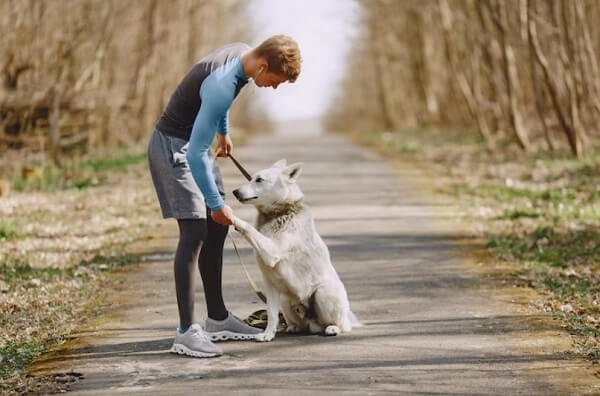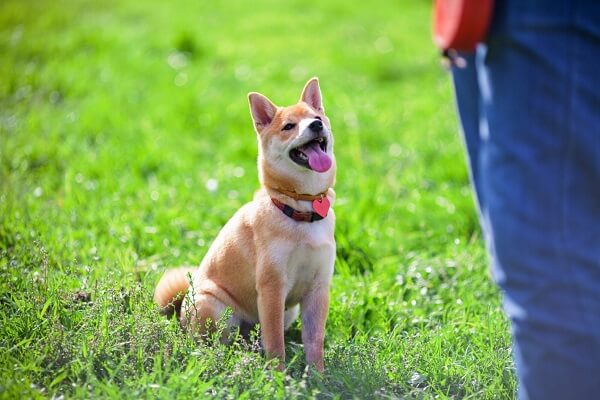Many pet owners will tell you they don’t view their dogs as pets but instead as family members. Similarly, dog owners don’t consider their dogs as animals but family members of a different species. After all, children are beloved members of the family, too.
People are increasingly hiring dog trainers to teach perfect manners to their pets. While many dogs have good manners, no family is perfect. That’s why your dog may need to visit the trainer for a refresher course.
But how do you know if your dog has received the training he or she needs? Read on to learn the signs of a trained dog.
What Does a Trained Dog Look Like?
A trained dog looks alert and attentive to its environment. Its eyes are focused on its handler as it moves in response to hand signals and commands. But there’s so much more to this. Here are as follows:
They Display Other Important, Species-Specific Behaviors
A trained dog looks alert, attentive, and able to take direction. They are focused and eager to please. Other important species-specific behaviors that can be seen include an active tail, ears erect, and eyes wide open.
They may crouch slightly in anticipation of their master’s commands. The dog’s overall body language, such as raised hackles and a stiff body, can display readiness and interest. Additionally, they may enjoy positive reinforcement for their responses.
A dog training also results in good manners such as not jumping up onto people, refraining from growling, and following directions when in public. Once trained, it is important for dogs to continue to practice their behaviors, as most learned behaviors will degrade over time if not regularly reinforced.
With repeated reinforcement, a fully trained dog can continue to display species-specific behaviors that are both consistent and desirable.
They are More Engaged With You
A trained dog looks like they are more engaged with you in comparison to one who has not been formally educated. With a trained dog, it almost seems as if they are reading your mind with the focus and attentiveness they show you.
This engagement is often seen when interacting with the same individual day after day. It may seem like the pup is holding their own conversations with you, as they become more responsive to your requests and body language.
They anticipate your needs and are willing to listen to the occasional commands you provide, allowing for an improved level of communication. This increase in engagement is indicative of an improved relationship between the two of you, providing a deeper level of companionship you can proudly take out into public.
They Start to Offer Behaviors That You Work on in Training
A trained dog can be identified by looking for behaviors that were established and reinforced through the training process. The dog may have learned to obey commands such as “sit,” “stay,” and come when called.
It may be responsive to hand signals, be able to fetch on command, and even be able to detect a dropped object from a distance. A trained dog may also know how to heel or walk on a loose leash, reliably come to its name, and ignore distractions.
It may even be able to do tricks such as playing dead, giving its paw, or rolling over. It will stop in its tracks when commanded, and it will remember learned boundaries and expectations. A trained dog is a reliable, obedient, and well-behaved pet that is a pleasure not only to its owners but to those it interacts with in the community.
They Spend More Time Relaxed
A trained dog looks like a content, relaxed animal. They no longer require excessive amounts of energy to be spent on correcting misbehaviors as they have learned from their lessons. Training has made them more at ease with their environment, allowing them to relax for much longer periods of time.
This reduction in stress in turn, leads to fewer behavioral issues and a more positive relationship between the dog and its handler. As their trust and respect for their handler grows, they will learn to trust commands and rely less on continuous stimulation.

Spending more time in a relaxed setting allows the dog’s natural personality to shine and its confidence to grow with a greater understanding of their purpose. Overall, a trained dog looks much calmer and contently relaxed, enabling them to enjoy life more.
The Benefits of Having a Trained Dog
Having a trained dog can provide several advantages for owners. To start with, the most obvious benefit is that the pet will be better behaved and more obedient. One can expect that their pet will respond better to commands and be less likely to cause accidents or other issues in the home.
A trained dog is also more apt to show enthusiasm when out and about due to the improved communication between pet and owner. This can lead to increased socialization opportunities with other animals or people when out and about.
Having a trained dog also increases safety; as their ability to obey commands often cuts down on the chance of accidents in public or other places. Overall, having a trained dog can help the owner to lead a much richer life with their pet.
Give the best care and training for your dog by considering to hire a professional from Rob’s Dogs.
Explore What a Trained Dog Looks Like
A trained dog should look obedient, responsive, and calm in any situation. With proper training, a well-mannered pup should be a welcome member of your family. If you need help developing your pup, contact a professional to assist with training and obedience.
With the right amount of time and dedication, your furry friend can become the best companion.




